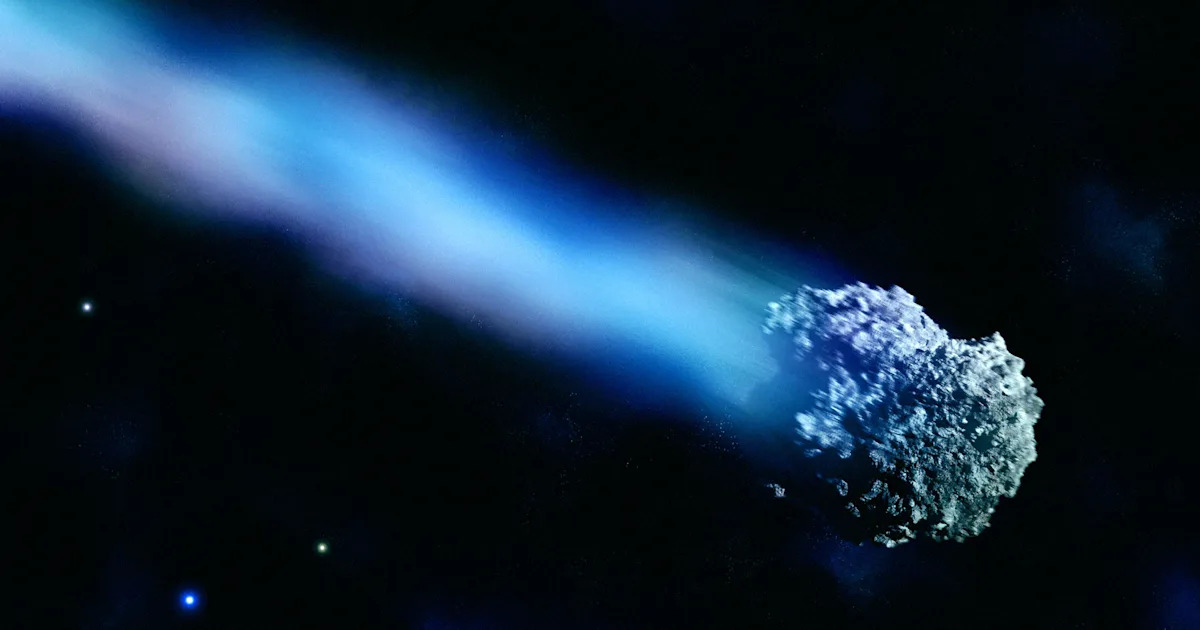For over two months, astronomers have been tracking an intriguing interstellar object, designated 3I/ATLAS, as it races through our solar system. This object is notable for being only the third ever detected from outside our solar system, following the groundbreaking discoveries of ‘Oumuamua in 2017 and 2I/Borisov in 2019. Researchers are engaging deeply with this comet-like entity, particularly due to its unusually high carbon dioxide composition, which exceeds prior expectations.
### Understanding 3I/ATLAS
Harvard astrophysicist Avi Loeb has made headlines with his assertion that 3I/ATLAS may be far more massive than was initially surmised. In a recent analysis, he examined the object’s trajectory and found its “non-gravitational acceleration” to be remarkably low, suggesting a mass exceeding 33 billion tons. To put this in perspective, it establishes the diameter of its solid-density nucleus at over 3.1 miles, placing it at the upper limits of current size estimates based on previous observations.
This finding is significant not just in scale, but also in contextualizing 3I/ATLAS within the small subset of interstellar objects. Loeb pointed out that 3I/ATLAS could be “three to five orders of magnitude” more massive than its interstellar predecessors, ‘Oumuamua and 2I/Borisov, which measured approximately 0.25 miles and 0.6 miles in length, respectively. The implications of such mass elevate the scientific discussion around what constitutes a typical interstellar object.
### A Rare Cosmic Event
Loeb’s analysis does not stop at mass. He raises critical questions about the object’s trajectory. Its path brings it dangerously close to several celestial bodies, including Jupiter, Mars, and Venus. After what Loeb has called a “remarkable fine-tuning,” within days, 3I/ATLAS will come as close as 1.67 million miles to Mars’ orbit. This proximity opens unique observational opportunities, especially for NASA’s Mars Reconnaissance Orbiter, equipped with the HiRISE camera.
Pointing HiRISE at 3I/ATLAS would be a remarkable feat of cosmic coordination, providing critical data that could yield insights into the object’s diameter and surface characteristics. The reflection of sunlight captured by the camera will help constrain the surface area of the nucleus, offering further clues about its nature.
### Persuasive Theories
Loeb’s theory goes beyond conventional astrophysics, entertaining the possibility that 3I/ATLAS may not just be a massive comet but could also represent an artifact of advanced extraterrestrial technology. If observations conclude that the object’s core is larger than 3.1 miles, it could challenge accepted norms about interstellar materials and point toward artificial constructs rather than natural formations.
Loeb recently stated, “Is 3I/ATLAS an unusually massive comet with an unusual chemical composition on an unusually rare trajectory, or could it be alien technology?” This provocative question challenges traditional scientific thinking. He further emphasized the need for caution in inferring the object’s nature based on its outward characteristics, urging researchers not to “judge a book by its cover.”
### The Wider Implications
The rarity of interstellar objects is of particular importance. Considering our current discoveries, it is striking to reflect on the relatively meager supply of detected objects compared to the theoretical models of what should exist. According to Loeb, with a limited reservoir of heavy elements in the universe, the astrophysical community should have discovered significantly more objects on the scale of 1I/’Oumuamua before encountering 3I/ATLAS. The findings challenge not only our understanding of these celestial travelers but also the mechanisms behind their formation and trajectories.
### Looking Ahead
As 3I/ATLAS approaches Mars, astronomers are poised at an exciting juncture. They have the chance to gather unprecedented data on a massive interstellar object. Such observations could potentially reshape our understanding of comets and interstellar travel. The project’s success could herald an era of more deliberate exploration of interstellar matter and address whether such objects carry the potential for life or technological artifacts.
### Final Thoughts
3I/ATLAS serves as a compelling focal point in the study of interstellar objects. The myriad questions surrounding its mass, composition, and trajectory signify a broader quest to understand our universe. Are we merely looking at another cosmic anomaly, or does 3I/ATLAS offer us a rare insight into the potential for life beyond our planet?
As astronomers align their instruments and observations, the world watches with bated breath. In the age of modern astrophysics, every discovery could herald new paradigms in our understanding of the universe—and 3I/ATLAS might just be the next landmark in our celestial journey. Whether it is an unusually massive comet or a remnant of an alien technological endeavor, the implications of 3I/ATLAS beckon exploration and understanding far beyond what we have currently imagined. The coming observations could be pivotal not only for astronomers but for humanity’s understanding of its place in the cosmos.
Source link










